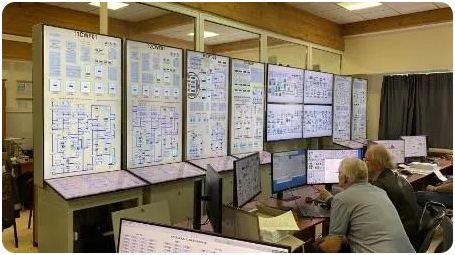Italy’s Ministry of Environment and Energy Security has recently published a newly revised energy and climate plan, which has been submitted to the European Commission for review. Compared with the version 3 years ago, the revised plan has increased the goals: Italy hopes that by 2030, renewable energy can create 65% of electricity and account for 40% of total energy consumption, while green hydrogen will meet 42% of industrial demand. Earlier Italy’s Minister of Environment and Energy Security Gilberto Frattin also said the country could close its coal-fired power stations in 2024, a year earlier than originally planned, if natural gas prices remain at current low levels.
As one of the important agricultural countries in Europe, Italy is vigorously promoting the construction of agricultural photovoltaic projects, and the relevant sites can engage in agricultural activities while meeting the needs of photovoltaic power generation. Italy’s national power company announced in March this year, will be in the capital of Rome where the Lazio region to build the country’s largest agricultural photovoltaic power plant. After the completion of the power station will reach 280 GWh of annual power generation, can meet the local energy needs of about 111,000 households, reduce about 130,000 tons of carbon emissions.
In terms of green hydrogen production, in April this year, the EU approved a 450 million euro green hydrogen energy program in Italy. In the future, Italy will increase investment in green hydrogen production, storage and transportation, and hydrogen refueling equipment. The Italian government also announced that it will invest 300 million euros in some areas to carry out hydrogen train pilot and related facilities construction, Sicily and the southern city of Taranto, two green hydrogen project also won the EU’s public funding. In addition, automobile hydrogen refueling stations have also been inaugurated in Venice, Rome and other cities.
The Italian government has launched a number of initiatives to encourage the development of renewable energy. Italy’s Ministry of Environment and Energy Security signed a decree this year to promote photovoltaic, wind, hydroelectric and biomass electricity to residents in the form of tariff incentives and grants, and will allocate 2.2 billion euros to subsidize the construction and renewal of community renewable energy facilities. At the same time, the Italian government announced a subsidy of 1.1 billion euros to encourage agricultural photovoltaic projects to install high-efficiency and innovative photovoltaic modules; another subsidy of 1.5 billion euros to help agribusinesses to install photovoltaic systems on their roofs, which will receive income from the sale of electricity after being connected to the power grid.
Italy also continues to increase research and development of renewable energy technologies.In 2019, the Italian Commission for New Energy and the Environment proposed a three-year research program on the main components of solar photovoltaic power plants. The commission is set to establish an experimental platform in Rome for the study of solar industrial thermal systems. Currently, Italy’s first solar-thermal photovoltaic hybrid power plant has been built in the city of Paltana, Sicily. According to reports, the power plant can meet the electricity demand of about 1/3 of local households and can store energy and run at full capacity for about 15 hours without the sun.
Italy’s new energy and environment committee energy technology and renewable energy department director Giorgio Gratti said, photothermal power station has many advantages, can be realized in the short and medium term scale effect, and its production of medium and high temperature heat can be used for pharmaceutical, food and textile industry production, but also for the production of biomass fuels and electrolysis of water to produce hydrogen to provide energy.





